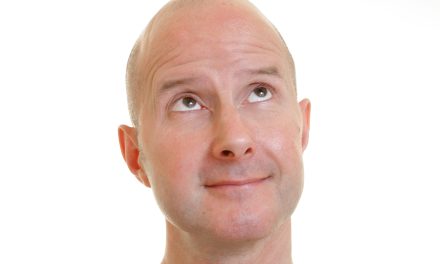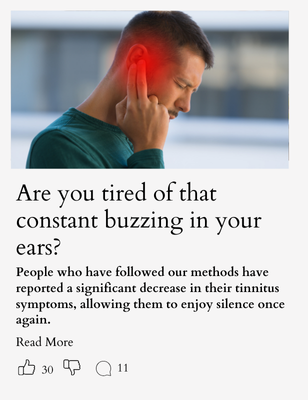Every day, the average person loses about 50 to 100 hairs. This amount of daily hair loss is considered normal and is part of the natural hair growth cycle involving the anagen, catagen, and telogen phases.
When shedding goes beyond this range, it may be a sign of a condition that needs attention or treatment.
Hair grows in cycles, with each strand existing in a different phase at any point in time. The key phases are growth (anagen), transition (catagen), and rest (telogen).
Hair follicles undergo these phases, balancing the loss and regrowth of hair. A disruption in this cycle can indicate underlying issues such as hormonal imbalances or nutritional deficiencies.
Understanding hair loss and its impacts on lifestyle and self-esteem prompts many to seek professional advice and treatment. Methods range from medications to natural care routines, helping manage and prevent excessive loss. These treatments aim to stabilize shedding and promote healthier hair.
Key Takeaways
- Normal daily hair loss ranges from 50 to 100 hairs.
- Hair growth involves anagen, catagen, and telogen phases.
- Treatments help manage hair loss and enhance hair health.
Understanding Hair Loss
Hair loss can occur for various reasons, affecting people differently. Understanding the difference between normal shedding and more serious hair loss can help determine when it’s time to seek advice from a specialist.
Normal Hair Shedding Vs. Hair Loss
It’s normal to lose 50 to 100 hairs a day. This is part of the natural hair growth cycle.
Hair shedding is when old hairs fall out and new hairs grow in their place. This process is balanced and doesn’t result in noticeable thinning.
Hair loss indicates that more hair is falling out than growing, which can lead to bald patches or noticeable thinning. Conditions like androgenic alopecia, telogen effluvium, and anagen effluvium play a role. These forms of hair loss can be triggered by genetics, stress, or health conditions, leading to patterns like female pattern baldness and male pattern baldness.
Hair Growth Cycle and Loss Phases
Hair grows in a cycle comprising three main phases: anagen, catagen, and telogen.
- Anagen (Growth Phase): This is the longest phase, lasting 2 to 7 years. Anagen effluvium can disrupt this phase, often due to medical treatments like chemotherapy.
- Catagen (Transition Phase): Lasting about 2 weeks, hair follicles shrink but do not produce visible changes.
- Telogen (Resting Phase): Lasting around 3 months before hair sheds and new growth begins. Telogen effluvium occurs when a large number of hairs enter the telogen phase prematurely due to factors like stress or hormonal changes.
Common Types of Hair Loss
Androgenic alopecia is a genetic condition leading to male pattern baldness and female pattern baldness. It causes thinning hair and a receding hairline in men and thinning on the crown in women.
Alopecia areata causes bald spots or patches and may be due to autoimmune factors. Unlike patterned baldness, it can occur suddenly at any age.
Other types include traction alopecia, from tight hairstyles, and scarring alopecia, which involves permanent hair follicle damage. Understanding these variations can aid in recognizing when hair loss is beyond the normal range of daily shedding.
Causes of Hair Loss
Hair loss can result from various factors, including genetics, hormonal imbalances, and lifestyle choices. Each factor plays a significant role in how hair health is affected in different individuals.
Genetic Factors
Genetics is a leading cause of hair loss. When individuals have a family history of hair loss, they may inherit genes linked to conditions such as hereditary hair loss. Men and women can both experience pattern baldness, although it is more common in men. These genes can influence how much hair is lost and the age at which it starts.
Androgenetic alopecia, also known as male or female pattern baldness, is the most common form of genetic hair loss. Hair follicles shrink over time, resulting in shorter and finer hair. Eventually, hair follicles might stop producing new hair. Understanding the genetic predisposition can help in early diagnosis and intervention.
Hormonal Changes and Medical Conditions
Hormonal imbalances can trigger hair loss. Conditions like pregnancy, childbirth, menopause, and thyroid diseases lead to hormonal changes that affect hair growth. For some individuals, hormonal changes may balance over time, reducing hair loss. For others, it remains a challenge.
Medical conditions can also play a significant role. Autoimmune diseases like alopecia areata cause patchy hair loss when the immune system attacks hair follicles. Other conditions, such as scalp psoriasis and fungal infections like tinea capitis, damage hair follicles and interrupt natural hair growth. Effective treatment often involves addressing the underlying hormonal or medical issues.
Lifestyle and Environmental Factors
Lifestyle choices and environmental factors significantly impact hair health. Diet deficiencies, such as low levels of vitamins and minerals, can weaken hair, leading to increased shedding.
Maintaining a balanced diet with adequate supplements and vitamins is essential.
Stress is another major contributor. High stress levels can lead to conditions like telogen effluvium, where hair prematurely enters the shedding phase. Additionally, certain medications, especially steroids, have side effects that include hair loss. Regular use of harsh hair treatments and exposure to environmental pollutants can also damage hair. Focusing on a healthy lifestyle with minimal stress and chemical exposure can improve hair health.
Recognizing Hair Loss Symptoms
Identifying hair loss early is important. It helps in managing symptoms effectively and slowing down the process. Visible changes in hair and scalp can provide clues about what is happening.
Early Signs of Balding
One of the first signs of balding is excessive shedding. Individuals might notice more hair strands on their pillow, hairbrush, or in the shower drain. This can indicate an abnormal hair loss pattern rather than the usual shedding of about 100 hairs per day.
Observing a receding hairline or the development of thinner spots is another early symptom. Once balding begins, these areas may become more pronounced, indicating that the hair follicles are not as active in growth.
Another early sign is noticing a widening part or smaller ponytails. This often happens before any visible scalp patches appear.
Patterns of hair loss can differ between men and women, with male pattern baldness usually starting at the temples and crown, while women may first experience overall thinning without distinct bald spots.
Visible Changes to Hair and Scalp
Visible changes occur as hair thinning progresses. People may observe the scalp becoming more visible through their hair, giving it a less full appearance.
For some, the hair can appear limp or lose its volume, which may make styling more challenging. This change can become more noticeable with certain hairstyles, where the scalp shows more easily.
Checking for unusual patterns on the scalp can also be informative. Areas where hair seems to be thinning out unevenly may signify active hair loss. Using a hairbrush can help in assessing this; more hair strands left behind may indicate an increase in hair loss. Regular monitoring of hair condition can help in seeking treatment promptly if unusual hair changes are seen.
Professional Diagnosis and Consultation
Hair loss can vary from mild shedding to more severe forms like alopecia. Professional diagnosis can help identify the cause and guide treatment options. It’s essential to know when to seek help and what diagnostic tests may be involved.
When to See a Dermatologist
Seeing a dermatologist is crucial when experiencing unusual or excessive hair loss. If someone notices bald spots, patchy hair loss, or redness on the scalp, it may indicate conditions like alopecia or scalp psoriasis.
Persistent shedding of more than 100 hairs a day also warrants professional advice. A dermatologist can differentiate between various hair loss patterns, helping identify the cause and suggesting suitable treatments. Early consultation can prevent further loss and improve treatment success.
Diagnostic Tests and Assessments
Dermatologists or trichologists typically perform a range of assessments to diagnose hair loss. These may include a physical examination of the scalp and hair.
Blood tests can detect underlying conditions contributing to hair loss, like hormonal imbalances. A scalp biopsy might be performed if the physical examination is inconclusive, allowing for a detailed analysis.
Other methods, such as hair pull tests, assess the strength and resilience of hair. These diagnostics help tailor a treatment plan to the specific needs of the individual, whether it requires medication, therapy, or lifestyle changes.
Common Treatments for Hair Loss
Effective treatment options for hair loss include medications, technological and surgical interventions, as well as natural remedies. Each approach varies in its application and results, catering to different needs and preferences.
Medication and Topical Treatments
Medications such as finasteride (Propecia) and minoxidil (Rogaine) are popular treatments.
Finasteride is taken orally and is known for treating androgenetic alopecia, primarily in men. It works by reducing DHT levels in the scalp, which helps slow hair loss and may lead to regrowth. Men using finasteride should commit to continued use for sustained results.
Minoxidil is a topical treatment applied to the scalp. It’s available in both 2% and 5% versions, with the latter providing more noticeable results for many users. Regular application can promote hair regrowth by improving blood circulation in the scalp.
Technological and Surgical Interventions
Technological methods like microneedling and light therapy can enhance hair regrowth.
Microneedling involves using tiny needles to stimulate hair follicles and encourage growth. This process can be combined with topical treatments for better results.
Light therapy, often performed with laser devices, aids in stimulating the scalp, leading to improved density and health of hair.
Hair transplant surgery is another option where hair follicles are moved from a denser area of the scalp to areas requiring more coverage, providing a permanent solution for some individuals.
Natural Remedies and Lifestyle Adjustments
Some prefer natural treatments such as Nutrafol, a supplement known for promoting hair health through botanicals.
Lifestyle adjustments, including a balanced diet rich in vitamins and minerals, stress reduction, and proper scalp care, can also contribute to healthier hair.
PRP (Platelet-Rich Plasma) therapy is another favored technique. It involves injecting concentrated plasma from the patient’s blood into the scalp to encourage growth and improve hair thickness. The combination of these methods can lead to effective management and restoration of hair.
Managing Hair Loss Psychosocial Effects
Hair loss, like alopecia, can significantly affect emotional well-being. People often face low self-esteem and stress due to changes in their appearance. Addressing these feelings and finding healthy coping mechanisms is crucial for improving mental health.
Coping with the Emotional Impact
The psychological impact of hair loss can be challenging. Individuals may experience emotions such as sadness or frustration.
Identifying and expressing these feelings is important for emotional well-being. Journaling or speaking with a therapist can help in processing these emotions.
Activities that boost self-confidence can make a difference. Trying new hairstyles or wearing hats and scarves might help someone feel more comfortable.
Engaging in hobbies and activities that focus on personal strengths, rather than appearance, also promotes positive mental health.
Support Groups and Psychological Health
Support groups offer a space to share experiences with others facing similar challenges. These groups can provide emotional support and practical advice. They help participants feel less isolated and more understood in their experiences with hair loss.
Connecting with others in similar situations can lead to new coping strategies. Online forums and local meetups are common platforms for these groups.
It’s important to find a group that fits personal needs and preferences. Together, members can encourage each other and share insights about managing the psychological aspects of hair loss effectively.
Preventive Measures and Hair Care
Taking care of hair and scalp health can help prevent hair loss issues. Regular hair care can address problems like traction alopecia and baldness, while proactive treatments can offer additional support.
Daily Hair Care Practices
Focusing on regular maintenance can promote a healthy scalp and reduce hair loss.
Washing hair with a gentle shampoo helps remove dirt and oil without stripping essential moisture. Choosing the right hair products, such as a mild shampoo and a conditioner, is essential.
Use sulfate-free products to minimize irritation.
Limiting the use of heat styling tools can protect hair from damage.
Brushing gently with a wide-tooth comb prevents breakage. For those with long hair, avoiding tight hairstyles reduces the risk of traction alopecia.
Incorporating regular scalp massages stimulates circulation, promoting hair health.
A balanced diet rich in vitamins and minerals also supports hair strength. Eating foods high in protein and iron is particularly beneficial.
Proactive Treatments for Hair Health
Proactive measures can be effective in managing hair loss.
For instance, using topical treatments like minoxidil may provide good results for some individuals. This is a popular option for conditions like androgenetic alopecia.
Hair supplements rich in biotin and other essential nutrients can strengthen hair from within.
Consulting with a healthcare professional for advice on appropriate supplements is advisable.
Incorporating relaxation techniques, such as yoga or meditation, can help manage stress, which plays a significant role in hair health.
Techniques to manage conditions like trichotillomania, where individuals pull their hair out, may also help prevent hair loss.
Taking an informed approach to hair care can help both men and women maintain healthy locks longer.
Frequently Asked Questions
Hair loss can be a concern for both men and women. Understanding how much hair loss is typical can help identify if there might be a problem.
What is the average amount of hair a man loses per day?
Men typically lose around 50 to 100 hairs each day. This is a normal part of the hair growth cycle and does not usually indicate any underlying issues.
How much hair loss is considered normal for women each day?
Women also shed about 50 to 100 hairs daily. Certain factors like hair length and washing routines can affect this number slightly.
At what rate should I expect hair regrowth daily?
Hair tends to grow about 0.35 millimeters per day. This rate can vary based on genetics, health, and hair care practices.
Is experiencing hair loss in the shower a sign of abnormal shedding?
Shedding hair in the shower can be normal. The act of washing and conditioning can loosen hairs that are at the end of their life cycle, causing them to fall out.
What is a normal range of hair loss for male teenagers daily?
Male teenagers might experience hair loss similar to adults, shedding anywhere from 50 to 100 hairs a day. Hormones and stress can sometimes lead to noticeable fluctuations.
Can losing up to 150 strands a day still be within the normal range?
Yes, losing up to 150 strands per day can be normal for some individuals. This is especially true for those with longer hair or those who skip days between washes. If this changes suddenly or concerns arise, consulting a professional might be helpful.

















